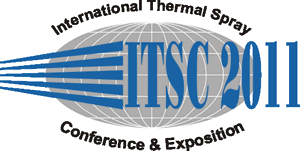
|
2604 |
|
Thursday, September 29, 2011, Saal A 9:25 AM Industrial Gas Turbines 2 |
|
Improving atmospheric plasma spraying of zirconate thermal barrier coatings based on particle diagnostics |
|
Georg Mauer* / Forschungszentrum Jülich GmbH, Germany Vadym Kochubey / Forschungszentrum Jülich GmbH, IEK-1, Germany Robert Vaßen/ Forschungszentrum Jülich GmbH, IEK-1, Germany Detlev Stöver/ Forschungszentrum Jülich GmbH, IEK-1, Germany |
|
Lanthanumzirconate (La2Zr2O7) was recently proposed as a promising material for thermal barrier coatings. Its cubic pyrochlore structure can largely tolerate vacancies at the La3+, Zr4+ and O2-sites without phase transformation. It is one of the few pyrochlores that are phase-stable up to their melting points and this is a major reason that it is believed to have potential as TBC material. Furthermore, La2Zr2O7 has even lower thermal conductivity than YSZ. However, the coating of this material does not give a longer thermal cycling life than YSZ coating which might be explained by its relatively low thermal expansion coefficient and poor toughness. This is similar for Gadoliniumzirconate (Gd2Zr2O7), however the thermal expansion coefficient of this is higher than La2Zr2O7. For this reason, such pyrochlores are not used as lone ceramic topcoats but in combination with YSZ in double layer systems. At atmospheric plasma spraying (APS) of La2Zr2O7 a considerable amount of La2O3 can evaporate in the plasma flame, resulting in a nonstoichiometric coating. As indicated in the phase diagram of the La2O3-ZrO2 system, in the composition range of pyrochlore structure, the stoichiometric La2Zr2O7 has the highest melting point and other compositions are eutectic. APS experiments were performed with a TriplexPro |